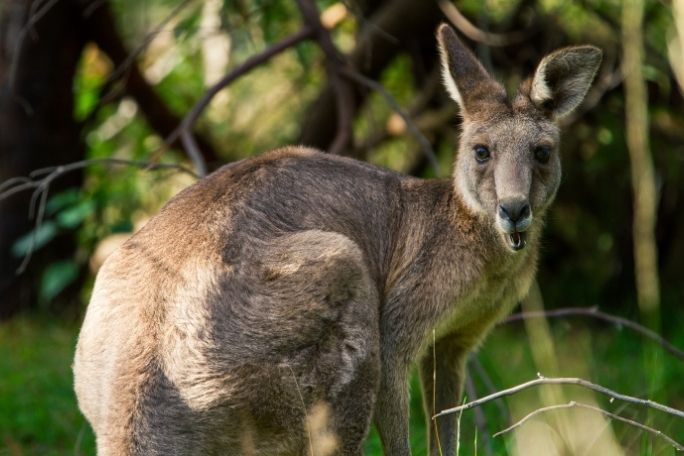Lesson summary
Students explore the process of ecosystem regeneration after a bushfire. They begin by defining key terms before looking at the adaptations Australian flora and fauna have to bushfires. Based on this information, they then explore the concept of ecological succession by working in groups to create a drawing of how flora regenerates after a bushfire. They then add further information to speculate on how and when fauna would reenter the recovering ecosystem. Finally, students create a final version of their succession model.
Learning intentions:
Students will...
- understand what succession is
- recognise how flora and fauna are adapted to bushfires.
Success criteria:
Students can...
- know what succession is and how a habitat might regenerate after a bushfire
- create a succession model to show the process of succession after a bushfire
- undertake and communicate research in support of their model
- work independently and collaboratively
- think critically about research and reflect on their findings.
Lesson guides and printables
Lesson details
Curriculum mapping
Australian Curriculum content descriptions:
Year 9 Science:
- Ecosystems consist of communities of interdependent organisms and abiotic components of the environment; matter and energy flow through these systems (ACSSU176)
- Scientific understanding, including models and theories, is contestable and is refined over time through a process of review by the scientific community (ACSHE157)
- Use knowledge of scientific concepts to draw conclusions that are consistent with evidence (ACSIS170)
- Communicate scientific ideas and information for a particular purpose, including constructing evidence-based arguments and using appropriate scientific language, conventions and representations (ACSIS174)
Syllabus outcomes: SC5-14LW, SC5-12ES, SC5-7WS, SC5-9WS
General capabilities: Critical and Creative Thinking
Cross-curriculum priority: Sustainability OI.2, OI.3
Relevant parts of Year 9 Science achievement standards: Students analyse how biological systems function and respond to external changes with reference to interdependencies, energy transfers and flows of matter. They use appropriate language and representations when communicating their findings and ideas to specific audiences.
This lesson is part of the wider unit of work Beyond the Bushfires – Secondary
Time required: 120+ mins
Level of teacher scaffolding: Medium – facilitate class discussion, lead students in activities
Resources required
- Article – The Conversation – Animal response to a bushfire is astounding. These are the tricks they use to survive
- Butchers paper and markers
- Device capable of presenting a video to the class
- How Have Plants Adapted To Bushfires? – Factsheet
- Optional – Secondary Succession After A Bushfire
- Optional – Secondary Succession After A Forest Fire
- Succession Worksheet
- Student Worksheets – one copy per student
Skills
This lesson is designed to build students’ competencies in the following skills:
- Communication
- Critical thinking
- Problem solving
- Collaboration
Additional info
In partnership with The Conversation, the Beyond the Bushfires series brings the words of scientists who are actively involved in research and science communication into classrooms throughout Australia. Students will explore evidence-based research embedded in the context of real-world practice.
Additional thanks to the Ian Potter Foundation, John T Reid Charitable Trusts and The Myer Foundation, for generously supporting the development of these lessons.


Welcome back!
Don't have an account yet?
Log in with:
By signing up to Cool.org you consent and agree to Cool's privacy policy to
store, manage and process your personal information. To read more, please see
our privacy policy here(Opens in new tab).
Create your free Cool.org account.
Many of our resources are free, with an option to upgrade to Cool+ for premium content.
Already have an account?
Sign up with:
By signing up to Cool.org you consent and agree to Cool's privacy policy to
store, manage and process your personal information. To read more, please see
our privacy policy here(Opens in new tab).